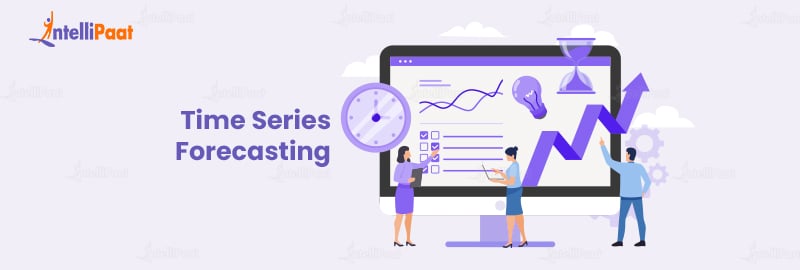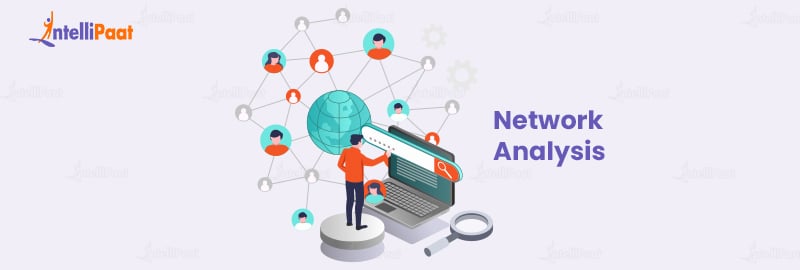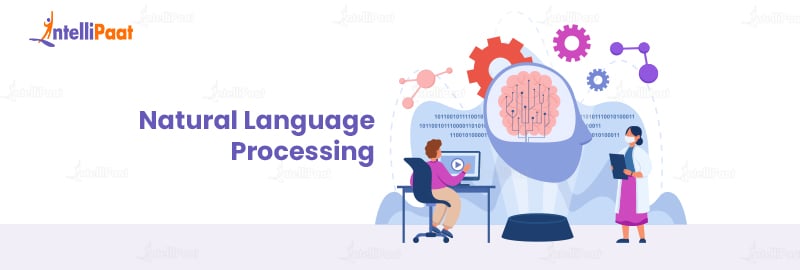Top 10 Apache Spark Project Ideas for Beginners in 2023
In this blog, we will explore the top 10 Apache Spark project ideas specifically designed for beginners in 2023. These projects cover a range of domains and will help beginners gain a solid foundation in Spark while working on real-world scenarios.
Table of Contents
- Skills Required for Spark Projects
- Top Apache Spark Project Ideas
- Which Industries Predominantly Use Apache Spark Project?
- How will Apache Spark Projects Help You?
- Conclusion
Check out the video on PySpark Tutorial to learn more about its basics
{
“@context”: “https://schema.org”,
“@type”: “VideoObject”,
“name”: “Apache Spark Tutorial | Spark Tutorial for Beginners | Spark Big Data | Intellipaat”,
“description”: “Top 10 Apache Spark Project Ideas for Beginners in 2023”,
“thumbnailUrl”: “https://img.youtube.com/vi/GFC2gOL1p9k/hqdefault.jpg”,
“uploadDate”: “2023-07-21T08:00:00+08:00”,
“publisher”: {
“@type”: “Organization”,
“name”: “Intellipaat Software Solutions Pvt Ltd”,
“logo”: {
“@type”: “ImageObject”,
“url”: “https://intellipaat.com/blog/wp-content/themes/intellipaat-blog-new/images/logo.png”,
“width”: 124,
“height”: 43
}
},
“embedUrl”: “https://www.youtube.com/embed/GFC2gOL1p9k”
}
Skills Required for Spark Projects
To pursue a career in analytics, one must acquire proficient skills in Spark. Below, we present a selection of essential skills that can be honed through Spark projects:
- NoSQL: NoSQL employs nontraditional data models instead of relational database management systems (RDBMS). This innovative tool utilizes flexible, visually appealing, and easily comprehensible data models, deviating from conventional platforms.
- MapReduce: Within the Hadoop framework, MapReduce is a model responsible for filtering, sorting, and summarizing vast datasets. It employs a process that breaks down big data into smaller subsets, facilitating quicker and more efficient processing.
- Data Visualization: Being capable of visualizing data and crafting a compelling narrative through it represents a paramount approach to captivating one’s audience. This proficiency in data visualization stands as a crucial skill for data experts, encompassing the creation of top-tier graphs and charts.
- Big Data: Big data refers to large, intricate datasets characterized by their immense volume, rapid influx, and difficulty in handling through typical software. Given that Spark excels in this domain, engaging in Spark projects becomes particularly advantageous for acquiring big data skills.
- Machine Learning: Machine learning plays a crucial role in the development of automated functions. As an artificial intelligence technique, it depends on data input and has the capability to perform predictive analysis with minimal human intervention. When dealing with large volumes of data, data analytics heavily rely on machine learning.
By practicing these skills through Spark projects, individuals can enhance their proficiency and readiness for a career in analytics.
Learn about Apache Spark from Apache Spark Training and excel in your career as an Apache Spark Specialist.
Top Apache Spark Project Ideas
Fraud Detection

Fraud detection is a critical task in various industries, including finance, e-commerce, and insurance. Leveraging Apache Spark for fraud detection projects can provide beginners with hands-on experience dealing with large-scale data analysis and identifying suspicious patterns.
Here’s a detailed explanation of a fraud detection project using Apache Spark:
1. Data Preprocessing: Cleaning and transforming raw data by removing inconsistencies, handling missing values, and standardizing formats.
2. Feature Engineering: Extracting relevant features from the data can help identify fraudulent patterns, such as transaction amount, time, location, and user behavior.
3. Machine Learning Models: Utilizing Spark’s machine learning libraries to train models, such as logistic regression, random forests, or gradient boosting, using labeled data to identify fraudulent activities.
4. Real-Time Monitoring: Implementing streaming data processing with Spark Streaming to detect fraud in real time, enabling immediate actions or alerts.
5. Anomaly Detection: Applying statistical techniques, such as clustering or outlier detection, to identify unusual patterns or behaviors that might indicate fraud.
Salient Key Features
- Data preprocessing and cleaning
- Feature engineering for fraud pattern identification
- Utilization of machine learning models for fraud detection
- Real-time monitoring and streaming data processing
- Anomaly detection techniques for identifying fraudulent activities
Customer Churn Prediction

Customer churn refers to the phenomenon where customers discontinue their relationship with a business. Predicting and preventing customer churn is crucial for companies across industries to retain valuable customers and maintain business growth. Here’s an in-depth explanation of a customer churn prediction project using Apache Spark:
1. Data Preparation: Preparing and cleaning customer data by handling missing values, removing duplicates, and standardizing formats
2. Feature Engineering: Extracting relevant features from customer data, such as purchase history, engagement metrics, customer demographics, and customer interactions
3. Machine Learning Models: Training Spark-based machine learning models, such as logistic regression, decision trees, or gradient boosting, using labeled data to predict customer churn probability
4. Performance Evaluation: Assessing the predictive models’ performance using evaluation metrics like accuracy, precision, recall, and F1-score
5. Actionable Insights: Utilizing the churn prediction models to identify customers at high risk of churn and designing retention strategies, personalized offers, or targeted interventions to mitigate churn
Salient Key Features
- Data preparation and cleaning for customer churn analysis
- Feature engineering to capture relevant customer behavior and interactions
- Utilization of machine learning models for churn prediction
- Performance evaluation of predictive models
- Actionable insights to retain customers and reduce churn rates
Sentiment Analysis

Sentiment analysis, also known as opinion mining, is a technique that aims to determine the sentiment or emotion expressed in a piece of text. It is widely used in various applications, including social media monitoring, customer feedback analysis, and market research. Here’s a detailed explanation of a sentiment analysis project using Apache Spark:
1. Data Preprocessing: Cleaning and preprocessing text data by removing noise, punctuation, and stop words, and performing tokenization and stemming
2. Feature Extraction: Transforming text data into numerical or vector representations, such as TF-IDF (Term Frequency-Inverse Document Frequency) or word embeddings, to capture sentiment-related features
3. Machine Learning Models: Training Spark-based machine learning models, such as Naive Bayes, logistic regression, or recurrent neural networks, using labeled data to classify text into positive, negative, or neutral sentiments
5. Performance Evaluation: Assessing the sentiment classification models’ performance using evaluation metrics like accuracy, precision, recall, and F1-score
6. Application and Visualization: Applying the sentiment analysis models to analyze real-time or batch text data, visualize sentiment trends, and extract actionable insights
Salient Key Features
- Data preprocessing and cleaning for sentiment analysis
- Feature extraction using TF-IDF or word embeddings
- Utilization of machine learning models for sentiment classification
- Performance evaluation of sentiment analysis models
- Application and visualization of sentiment analysis results
Image Recognition

The study of training machines to recognize and comprehend visual content in images is called image recognition or computer vision. Beginners can use Apache Spark for image recognition projects that involve large-scale image datasets and deep learning techniques. The following is a detailed explanation of an image recognition project utilizing Apache Spark:
1. Data Preprocessing: Preparing and cleaning image data by resizing, normalizing, and augmenting images to ensure consistency and improve model performance
2. Feature Extraction: Utilizing pre-trained convolutional neural network models, such as VGGNet, ResNet, or Inception, to extract high-level features from images
3. Model Training: Fine-tuning the pre-trained models on a specific image recognition task using transfer learning or training models from scratch using labeled image datasets
4. Evaluation and Validation: Evaluating the trained models through metrics such as accuracy, precision, recall, and F1-score is a reliable approach to measuring their effectiveness.
5. Prediction and Application: Applying the trained models to make predictions on new or unseen images for various applications, such as object detection, image classification, or facial recognition
Salient Key Features
- Data preprocessing and augmentation for image recognition
- Utilization of pre-trained convolutional neural network models
- Model training using transfer learning or training from scratch
- Evaluation and validation of image recognition models
- Application of trained models for object detection or image classification
Clickstream Analysis

Clickstream analysis involves the collection and analysis of data related to user interactions and behaviors on a website or application. It provides valuable insights into user navigation patterns, preferences, and engagement metrics. Apache Spark can be utilized for clickstream analysis projects, offering beginners the opportunity to work with large-scale clickstream data and derive actionable insights. Here’s an in-depth explanation of a clickstream analysis project using Apache Spark:
1. Data Collection: Gathering clickstream data, including user clicks, page views, timestamps, referrers, and session information, from web servers or tracking tools
2. Data Preprocessing: Cleaning and transforming clickstream data by removing irrelevant information, handling missing values, and standardizing formats
3. Sessionization: Grouping related user interactions into sessions based on time gaps or session timeout thresholds to understand user flow
4. Feature Extraction: Extracting relevant features from clickstream data, such as page visit frequencies, time spent on pages, conversion rates, or clickstream patterns
5. Analysis and Visualization: Utilizing Spark’s data processing and analytics capabilities to analyze clickstream data, identify bottlenecks, optimize user experiences, and visualize clickstream patterns
Salient Key Features:
- Clickstream data collection and preprocessing
- Sessionization for understanding user flow
- Feature extraction from clickstream data
- Data analysis and visualization using Apache Spark
- Identification of user behavior patterns and optimization opportunities
Recommendation Engine

A recommendation engine is a system that suggests relevant items or content to users based on their preferences, behaviors, or historical data. Apache Spark provides powerful tools and libraries for building recommendation engines, offering beginners the opportunity to work on personalized recommendation projects. Here’s an in-depth explanation of a recommendation engine project using Apache Spark:
1. Data Preprocessing: Cleaning and preparing user-item interaction data, such as ratings, purchases, or views, by handling missing values, removing outliers, and standardizing formats
2. Collaborative Filtering: Applying collaborative filtering techniques, such as user- or item-based filtering, to identify similar users or items and make recommendations based on their preferences
3. Content-Based Filtering: Utilizing content-based filtering techniques that analyze item features or attributes to recommend similar items to users based on their interests
4. Matrix Factorization: Employing matrix factorization algorithms, like Singular Value Decomposition (SVD) or Alternating Least Squares (ALS), to factorize the user-item interaction matrix and generate personalized recommendations
5. Evaluation and Validation: To measure recommendation models’ success, use precision, recall, and mean average precision metrics. They offer insights into the model’s performance and its ability to make effective recommendations.
Salient Key Features
- Data preprocessing and cleaning for recommendation systems
- Collaborative filtering and content-based filtering techniques
- Matrix factorization algorithms for personalized recommendations
- Evaluation and validation of recommendation models
- Generating relevant and personalized recommendations for users
Time Series Forecasting

Time series forecasting is the process of predicting future values based on historical data points ordered in time. Apache Spark provides powerful tools and libraries for analyzing and forecasting time series data, offering beginners the opportunity to work on projects related to predicting trends, demand, or stock prices. Here’s an in-depth explanation of a time series forecasting project using Apache Spark:
1. Data Preprocessing: Cleaning and preparing time series data by handling missing values, removing outliers, and smoothing the data
2. Feature Extraction: Identifying relevant features, such as trends, seasonality, and cyclical patterns, from the time series data
3. Model Selection: Choosing appropriate forecasting models, such as Autoregressive Integrated Moving Average (ARIMA), Exponential Smoothing (ES), or Long Short-Term Memory (LSTM), based on the characteristics of the time series data
4. Model Training and Evaluation: Training the selected models using historical data and evaluating their performance using metrics such as mean squared error or mean absolute error
5. Forecasting and Visualization: Generating forecasts for future time periods and visualizing the predicted values alongside the actual data to assess the accuracy of the models
Salient Key Features
- Data preprocessing and cleaning for time series analysis
- Feature extraction to capture patterns and seasonality
- Selection of appropriate forecasting models
- Model training and evaluation using historical data
- Forecast generation and visualization of results
Network Analysis

Network analysis involves the study of relationships and interactions between entities in a network, such as social networks, transportation networks, or communication networks. Apache Spark provides powerful graph processing capabilities, making it suitable for network analysis projects. Here’s an in-depth explanation of a network analysis project using Apache Spark:
1. Data Representation: Representing the network data as graphs, where nodes represent entities and edges represent relationships or interactions between them
2. Graph Processing: Applying graph algorithms and techniques, such as centrality analysis, community detection, or pathfinding, to uncover patterns, identify important nodes, or analyze network structures
3. Feature Extraction: Extracting relevant features from the network data, such as node attributes, edge weights, or network measures, to gain insights and make predictions
4. Visualization: Visualizing the network data and analysis results to aid in understanding complex relationships and patterns within the network
Salient Key Features
- Data representation and graph processing for network analysis
- Application of graph algorithms and techniques
- Feature extraction from network data
- Visualization of network structures and analysis results
Natural Language Processing

The study of Natural Language Processing (NLP) is concerned with the interaction between computers and human language. It encompasses the analysis, comprehension, and production of natural language text or speech. Apache Spark offers robust tools and libraries for NLP projects. This makes it an excellent choice for endeavors involving text and sentiment analysis, language translation, and other related tasks. Below, you’ll find a detailed explanation of a Natural Language Processing project utilizing Apache Spark.
1. Text Preprocessing: Cleaning and preparing text data by removing stop words, punctuation, and irrelevant information, and performing tokenization and stemming
2. Named Entity Recognition (NER): Identifying and extracting named entities, such as names, organizations, locations, or dates, from the text data
3. Sentiment Analysis: Analyzing the sentiment or emotion expressed in text data to determine whether it is positive, negative, or neutral
4. Language Modeling: Building language models, such as n-gram models or neural network-based models, to understand and generate human-like text
5. Text Classification: Categorizing text data into predefined classes or categories based on its content or topic.
Salient Key Features
- Text preprocessing and cleaning for NLP tasks
- Named Entity Recognition (NER) for extracting named entities
- Sentiment analysis to determine sentiment in text
- Language modeling for understanding and generating text
- Text classification for categorizing text data
Personalized Marketing

Personalized marketing is a strategy that tailors marketing campaigns and communications to individual customers based on their preferences, behaviors, and demographics. Apache Spark can be a powerful tool for implementing personalized marketing initiatives. Here’s how a project focused on personalized marketing using Apache Spark can benefit beginners:
1. Customer Segmentation: Apache Spark can analyze customer data, such as purchase history, browsing patterns, and demographic information, to segment customers into distinct groups based on their preferences and characteristics.
2. Recommendation Engine: Spark’s machine learning algorithms can build recommendation engines that provide personalized product recommendations to customers, increasing engagement and driving sales.
3. Real-Time Campaign Optimization: Apache Spark’s real-time processing capabilities enable marketers to analyze customer interactions and behavior in real-time, allowing them to optimize marketing campaigns on the fly and deliver targeted and timely messages.
4. Predictive Analytics: Spark can help identify patterns and trends in customer data, allowing marketers to predict customer behavior and preferences, and design targeted marketing strategies accordingly.
5. Cross-Channel Marketing: With Apache Spark, marketers can integrate and analyze data from multiple channels, including social media, email, and website interactions, to create a unified view of the customer and deliver consistent, personalized experiences across channels.
Salient Key Features
- Customer segmentation based on preferences and behavior
- Recommendation engine for personalized products suggestions
- Real-time campaign optimization and targeting
- Predictive analytics to forecast customer behavior
- Cross-channel marketing for consistent customer experiences
Which Industries Predominantly Use Apache Spark Project?
Apache Spark projects find applications in a wide range of industries due to their ability to process and analyze large-scale data efficiently. Some of the industries that predominantly utilize Apache Spark projects are as follows:
- Finance: The finance industry heavily relies on Apache Spark for fraud detection, risk analysis, algorithmic trading, and credit scoring. Spark’s distributed computing capabilities enable financial institutions to process large volumes of data in real-time, identifying fraudulent transactions and assessing market risks effectively.
- E-Commerce: In the e-commerce sector, Apache Spark projects are used for personalized recommendations, customer segmentation, and demand forecasting. By analyzing customer behavior and purchase history, Spark-powered systems can provide targeted product recommendations, enhance the customer experience, and increase sales conversion rates.
- Healthcare: Healthcare organizations employ Apache Spark to conduct medical image analysis, perform patient data analytics, and predict diseases. By utilizing Spark’s advanced analytics capabilities, medical professionals can extract valuable insights from extensive patient data. This will enhance diagnosis, treatment planning, and overall healthcare outcomes.
- Marketing: Apache Spark projects play a vital role in marketing by enabling customer behavior analysis, campaign optimization, and social media sentiment analysis. Marketers can leverage Spark’s real time processing capabilities to analyze customer interactions, identify trends, and make data-driven decisions to optimize marketing strategies and maximize ROI.
- Telecommunications: Telecommunication companies utilize Apache Spark projects for network analysis, customer churn prediction, and quality of service optimization. By processing network data, call logs, and customer interactions, Spark can help identify network bottlenecks, predict customer churn, and enhance overall network performance.
- Social Media: Apache Spark projects find significant applications on social media platforms for sentiment analysis, social network analysis, and content recommendation. Spark’s distributed processing capabilities enable real-time analysis of user-generated content, helping companies understand customer sentiment, identify influencers, and provide personalized content recommendations.
Want to grab detailed knowledge on Hadoop? Read this extensive Spark tutorial!
How will Apache Spark Projects Help You?
Undertaking Apache Spark projects offers several benefits for individuals looking to enhance their skills and advance their careers in data analytics and big data processing:
- Hands-On Experience: Apache Spark projects provide valuable hands-on experience in working with large-scale datasets, distributed computing, and data processing. This practical experience enhances your understanding of Spark’s functionalities and equips you with industry-relevant skills.
- Skill Development: By working on Apache Spark projects, you can develop a wide range of skills, including data cleaning and preprocessing, machine learning algorithms, data analysis, and visualization. These skills are highly sought after in the job market and can boost your career prospects.
- Portfolio Building: Completing Apache Spark projects allows you to build a strong portfolio showcasing your practical experience and proficiency in Spark. A well-rounded portfolio increases your chances of getting noticed by potential employers and landing exciting job opportunities.
- Domain Knowledge: Apache Spark projects enable you to explore various domains and industries, allowing you to gain valuable domain knowledge. This knowledge can be advantageous when targeting specific industries or use cases in your career.
- Career Advancement: Proficiency in Apache Spark opens up a wide range of career opportunities in data analytics, big data processing, and machine learning. Spark’s popularity in the industry ensures strong demand for professionals with Spark skills, providing you with ample career growth prospects.
Apache Spark projects serve as a stepping stone for aspiring data professionals. They help them develop practical skills, expand their knowledge, and position themselves for success in the rapidly evolving field of big data analytics.
Career Transition
Conclusion
Apache Spark offers a wide range of project ideas for beginners in 2023. These projects span various domains and provide hands-on experience utilizing Spark’s powerful capabilities. From fraud detection to personalized marketing, Spark enables beginners to work on real-world challenges and develop valuable skills. By exploring these project ideas, individuals can gain proficiency in data processing, machine learning, and analytics. Apache Spark serves as a versatile platform that empowers beginners to dive into the exciting world of big data. It also advances their knowledge in the field of data science.
If you have any queries related to Spark and Hadoop, kindly refer to our Big data Hadoop & Spark Community
The post Top 10 Apache Spark Project Ideas for Beginners in 2023 appeared first on Intellipaat Blog.
Blog: Intellipaat - Blog
Leave a Comment
You must be logged in to post a comment.














